Marwa Chafii
From OFDM to AFDM: Enabling Adaptive Integrated Sensing and Communication in High-Mobility Scenarios
Oct 31, 2025Abstract:Integrated sensing and communication (ISAC) is a key feature of next-generation wireless networks, enabling a wide range of emerging applications such as vehicle-to-everything (V2X) and unmanned aerial vehicles (UAVs), which operate in high-mobility scenarios. Notably, the wireless channels within these applications typically exhibit severe delay and Doppler spreads. The latter causes serious communication performance degradation in the Orthogonal Frequency-Division Multiplexing (OFDM) waveform that is widely adopted in current wireless networks. To address this challenge, the recently proposed Doppler-resilient affine frequency division multiplexing (AFDM) waveform, which uses flexible chirp signals as subcarriers, shows great potential for achieving adaptive ISAC in high-mobility scenarios. This article provides a comprehensive overview of AFDM-ISAC. We begin by presenting the fundamentals of AFDM-ISAC, highlighting its inherent frequency-modulated continuous-wave (FMCW)-like characteristics. Then, we explore its ISAC performance limits by analyzing its diversity order, ambiguity function (AF), and Cramer-Rao Bound (CRB). Finally, we present several effective sensing algorithms and opportunities for AFDM-ISAC, with the aim of sparking new ideas in this emerging field.
3GPP-Compliant Radar Cross Section Characterization of Indoor Factory Targets
May 13, 2025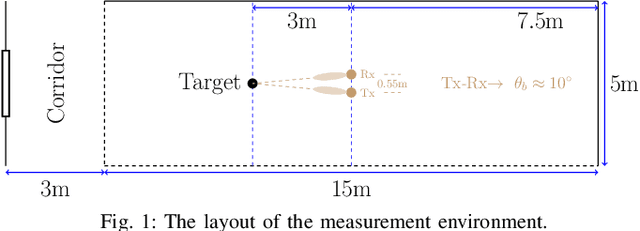
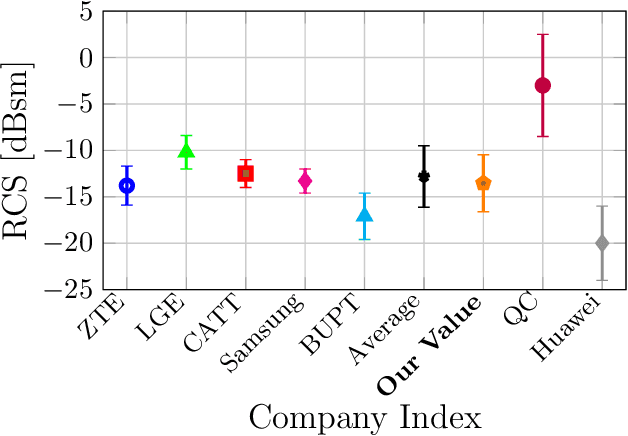
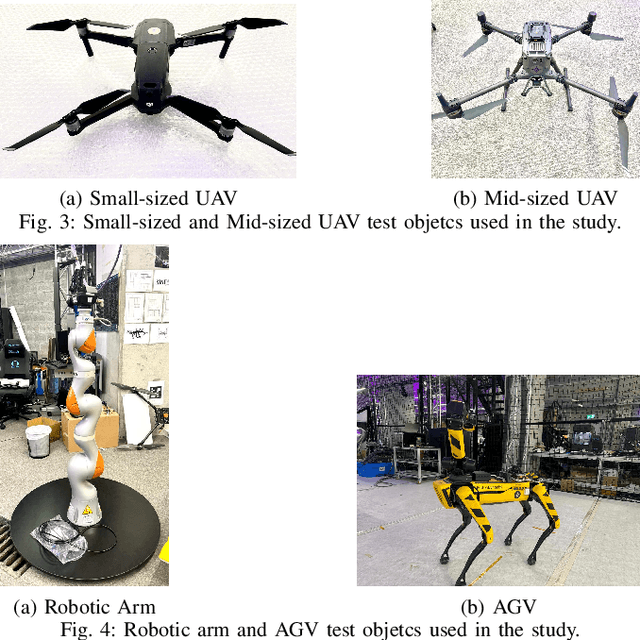
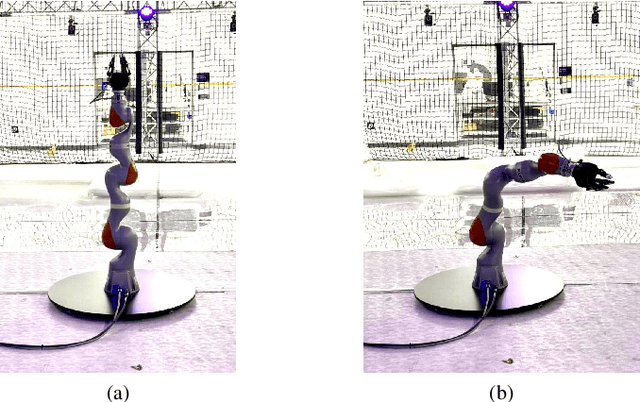
Abstract:The following paper presents a systematic 3rd Generation Partnership Project (3GPP)-compliant characterization of radar cross section (RCS) for indoor factory (InF) objects, including small and mid-sized unmanned aerial vehicles (UAVs), robotic arms, and automated guided vehicles (AGVs). Through measurements in the 25-28 GHz range, we validate the 3GPP standardized log-normal distribution model for RCS for above-mentioned target objects. The 3GPP-complaint RCS parameters obtained for the small-sized UAV are in close agreement (<1 dB deviation) with 3GPP agreed values. The mid-sized UAVs exhibit higher reflectivity compared to the small-sized UAV due to enhanced specular components attributed to material and lithium-ion battery packs. The robotic arm exhibits dynamic RCS behavior due to mechanical articulation, whereas UAVs show clear size-dependent reflectivity patterns in AGVs. Our findings provide empirical validation for RCS characterization for integrated sensing and communication channel modeling in InF environments.
Towards ISAC RIS-Enabled Passive Radar Target Localization
Feb 26, 2025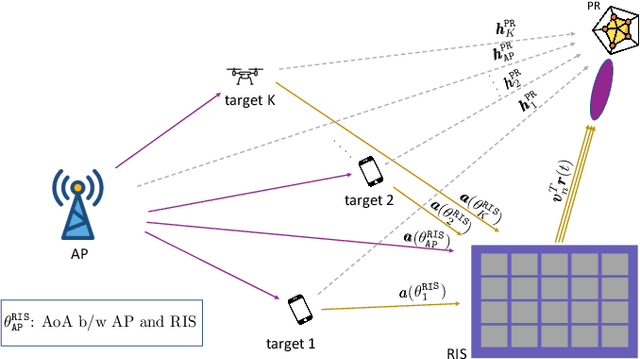
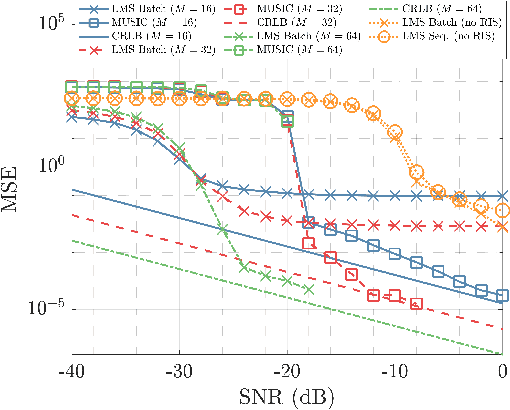
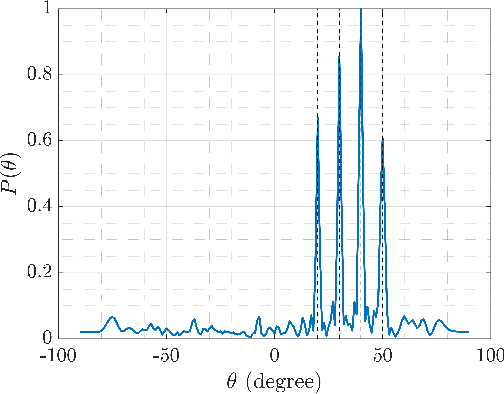
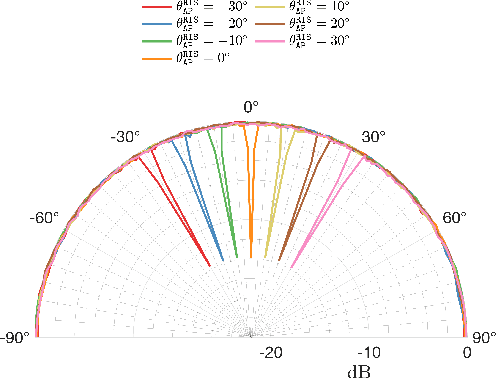
Abstract:Incorporating integrated sensing and communication capabilities into forthcoming 6G wireless networks is crucial for achieving seamless synchronization between the digital and physical worlds. The following paper focuses on a scenario where a passive radar (PR) is subject to weak line-of-sight signals of opportunity, emanating from an access point and subsequently reflecting off targets, ultimately reaching the PR. Furthermore, a normalized least mean squares method is presented for jointly detecting the number of targets and estimating target angles of arrival (AoAs). The algorithm iteratively adjusts the steering vector estimates to minimize a suitable error cost function, while the target AoAs are identified via a peak-finding search conducted on the resulted power spectrum. Simulation results show the capabilities of the proposed localization method, as well as a 14 dB dynamic range reduction that can be achieved at the PR.
Upper Mid-Band Spectrum for 6G: Vision, Opportunity and Challenges
Feb 25, 2025Abstract:Driven by the pursuit of gigabit-per-second data speeds for future 6G mobile networks, in addition to the support of sensing and artificial intelligence applications, the industry is expanding beyond crowded sub-6 GHz bands with innovative new spectrum allocations. In this paper, we chart a compelling vision for 6G within the frequency range 3 (FR3) spectrum, i.e. $7.125$-$24.25$ $\GHz$, by delving into its key enablers and addressing the multifaceted challenges that lie ahead for these new frequency bands. Here we highlight the physical properties of this \textcolor{black}{never-before} used spectrum by reviewing recent channel measurements for outdoor and indoor environments, including path loss, delay and angular spreads, and material penetration loss, all which offer insights that underpin future 5G/6G wireless communication designs. Building on the fundamental knowledge of the channel properties, we explore FR3 spectrum agility strategies that balance coverage and capacity (e.g. data rate) tradeoffs, while also examining coexistence with incumbent systems, such as satellites, radio astronomy, and earth exploration. Moreover, we discuss the potential of massive multiple-input multiple-output, compact and digital architectures, and evaluate the potential of multiband sensing for FR3 integrated sensing and communications. Finally, we outline 6G standardization features that are likely to emerge from 3GPP radio frame innovations and open radio access network developments.
Designing Waveforms with Adjustable PAPR for Integrated Sensing and Communication
Feb 25, 2025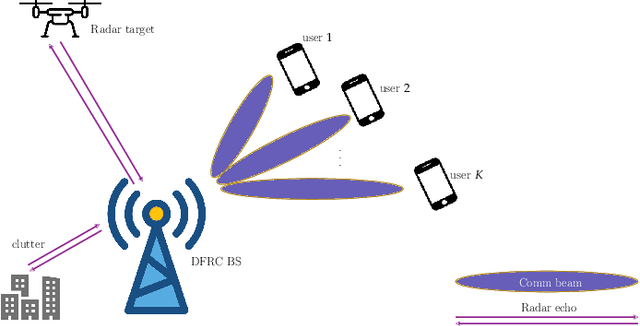
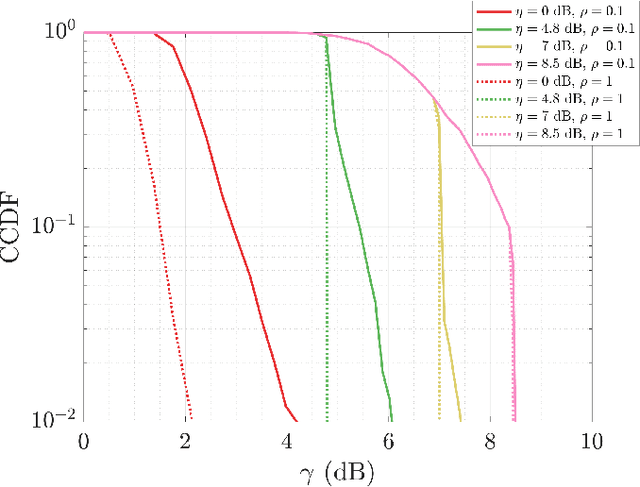
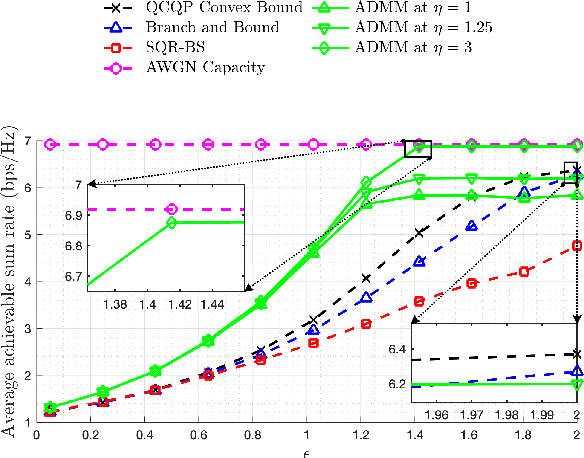
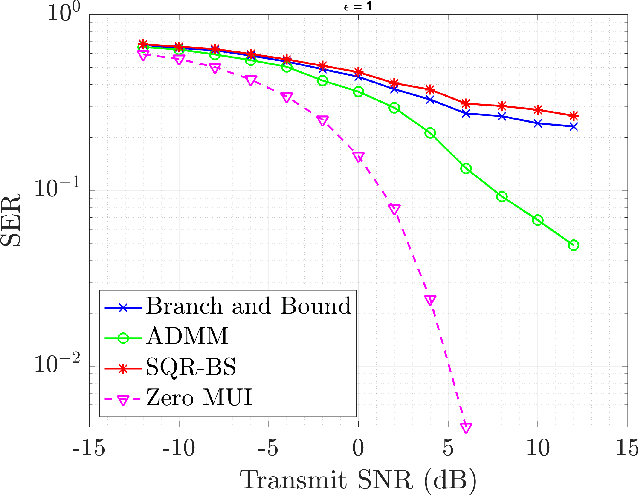
Abstract:This paper presents a new optimization framework dedicated for integrated sensing and communication (ISAC) waveform design. In particular, the problem aims at maximizing the total achievable sum-rate, through multi-user interference minimization, while preserving a certain level of similarity to a given desired radar waveform. Aiming towards feasible and practical PHY architectures, we also offer the flexibility of tuning the peak-to-average power ratio to a desired level. Towards this design, a non-convex optimization problem is formulated, and an alternating direction method of multipliers based solution is derived to converge towards the superiority of the final ISAC waveform. Finally, simulation results validate the proposed ISAC waveform design, as compared to state-of-the-art solutions.
Statistical and Deterministic RCS Characterization for ISAC Channel Modeling
Feb 17, 2025Abstract:In this study, we perform a statistical analysis of the radar cross section (RCS) for various test targets in an indoor factory at \(25\)-\(28\) GHz, with the goal of formulating parameters that may be used for target identification and other sensing applications for future wireless systems. The analysis is conducted based on measurements in monostatic and bistatic configurations for bistatic angles of \(20^\circ\), \(40^\circ\), and \(60^\circ\), which are functions of transmitter-receiver (T-R) and target positions, via accurate \(3\)dB beamwidth of \(10^\circ\) in both azimuth and elevation planes. The test targets include unmanned aerial vehicles, an autonomous mobile robot, and a robotic arm. We utilize parametric statistical distributions to fit the measured RCS data. The analysis reveals that the \textit{lognormal and gamma distributions} are effective in modeling the RCS of the test targets over different reflecting points of the target itself, i.e. when target is in motion. Additionally, we provide a framework for evaluating the deterministic bistatic RCS of a rectangular sheet of laminated wood, due to its widespread use in indoor hotspot environments. Novel deterministic and statistical RCS models are evaluated, incorporating dependencies on the bistatic angle, T-R distance (\(2\)m -\(10\)m) and the target. The results demonstrate that some proposed RCS models accurately fit the measured data, highlighting their applicability in bistatic configurations.
Beamforming Design for Secure RIS-Enabled ISAC: Passive RIS vs. Active RIS
Jan 31, 2025Abstract:The forthcoming sixth-generation (6G) communications standard is anticipated to provide integrated sensing and communication (ISAC) as a fundamental service. These ISAC systems present unique security challenges because of the exposure of information-bearing signals to sensing targets, enabling them to potentially eavesdrop on sensitive communication information with the assistance of sophisticated receivers. Recently, reconfigurable intelligent surfaces (RISs) have shown promising results in enhancing the physical layer security of various wireless communication systems, including ISAC. However, the performance of conventional passive RIS (pRIS)-enabled systems are often limited due to multiplicative fading, which can be alleviated using active RIS (aIRS). In this paper, we consider the problem of beampattern gain maximization in a secure pRIS/aRIS-enabled ISAC system, subject to signal-to-interference-plus-noise ratio constraints at communication receivers, and information leakage constraints at an eavesdropping target. For the challenging non-convex problem of joint beamforming design at the base station and the pRIS/aRIS, we propose a novel successive convex approximation (SCA)-based method. Unlike the conventional alternating optimization (AO)-based methods, in the proposed SCA-based approach, all of the optimization variables are updated simultaneously in each iteration. The proposed method shows significant performance superiority for pRIS-aided ISAC system compared to a benchmark scheme using penalty-based AO method. Moreover, our simulation results also confirm that aRIS-aided system has a notably higher beampattern gain at the target compared to that offered by the pRIS-aided system for the same power budget. We also present a detailed complexity analysis and proof of convergence for the proposed SCA-based method.
Reinforcement Learning for Enhancing Sensing Estimation in Bistatic ISAC Systems with UAV Swarms
Jan 11, 2025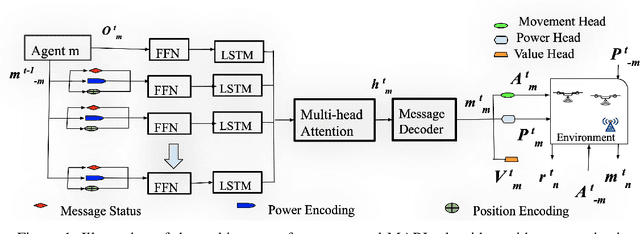
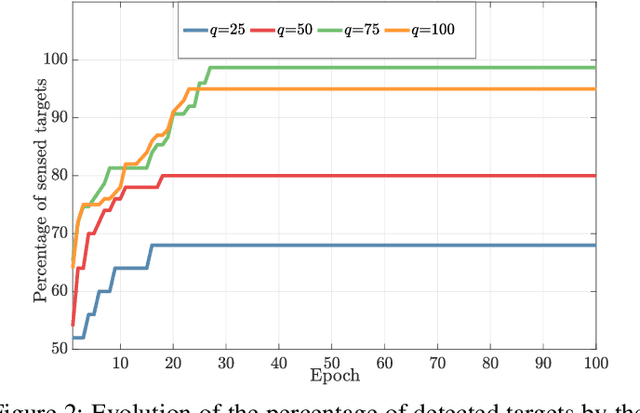
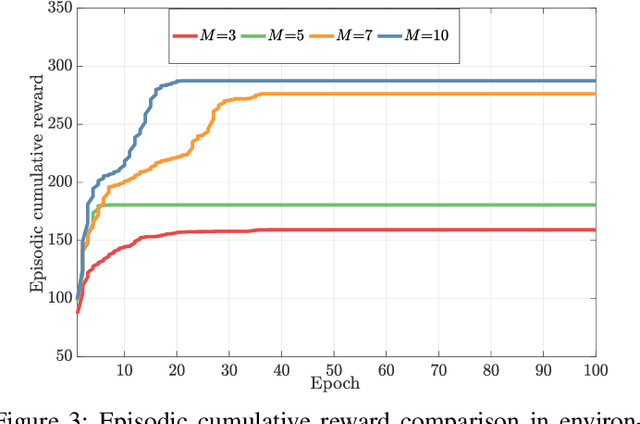
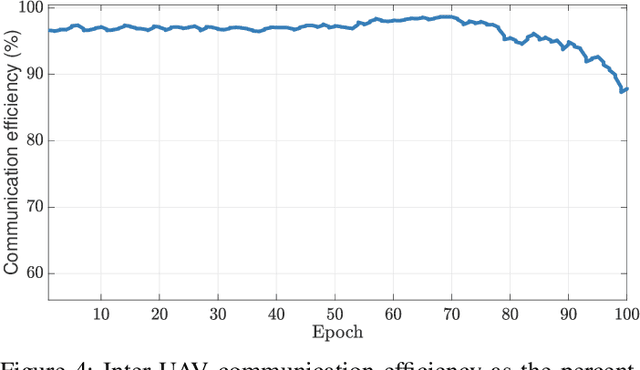
Abstract:This paper introduces a novel Multi-Agent Reinforcement Learning (MARL) framework to enhance integrated sensing and communication (ISAC) networks using unmanned aerial vehicle (UAV) swarms as sensing radars. By framing the positioning and trajectory optimization of UAVs as a Partially Observable Markov Decision Process, we develop a MARL approach that leverages centralized training with decentralized execution to maximize the overall sensing performance. Specifically, we implement a decentralized cooperative MARL strategy to enable UAVs to develop effective communication protocols, therefore enhancing their environmental awareness and operational efficiency. Additionally, we augment the MARL solution with a transmission power adaptation technique to mitigate interference between the communicating drones and optimize the communication protocol efficiency. Moreover, a transmission power adaptation technique is incorporated to mitigate interference and optimize the learned communication protocol efficiency. Despite the increased complexity, our solution demonstrates robust performance and adaptability across various scenarios, providing a scalable and cost-effective enhancement for future ISAC networks.
An Experimental Multi-Band Channel Characterization in the Upper Mid-Band
Nov 19, 2024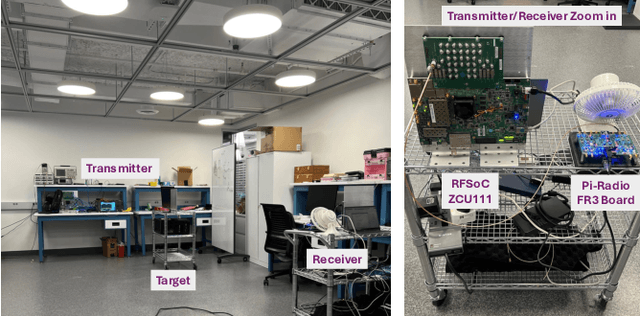
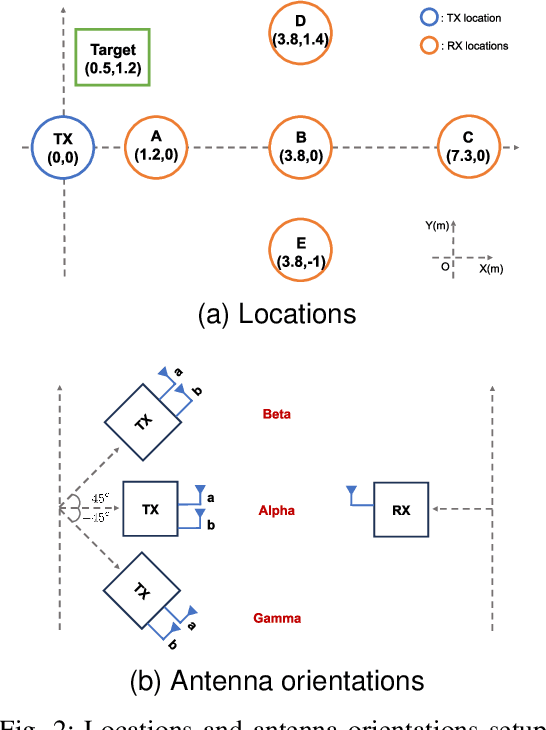
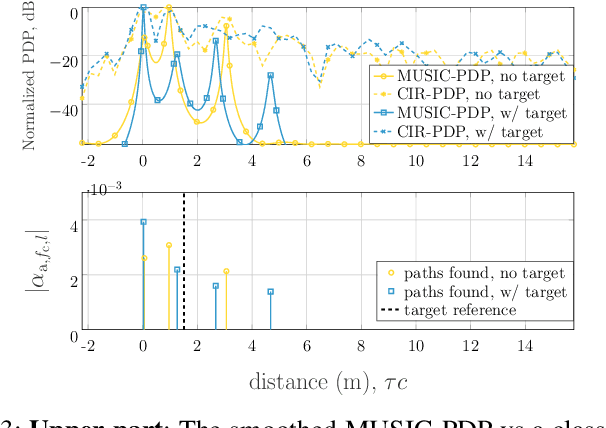

Abstract:The following paper provides a multi-band channel measurement analysis on the frequency range (FR)3. This study focuses on the FR3 low frequencies 6.5 GHz and 8.75 GHz with a setup tailored to the context of integrated sensing and communication (ISAC), where the data are collected with and without the presence of a target. A method based on multiple signal classification (MUSIC) is used to refine the delays of the channel impulse response estimates. The results reveal that the channel at the lower frequency 6.5 GHz has additional distinguishable multipath components in the presence of the target, while the one associated with the higher frequency 8.75 GHz has more blockage. The set of results reported in this paper serves as a benchmark for future multi-band studies in the FR3 spectrum.
Low Dynamic Range for RIS-aided Bistatic Integrated Sensing and Communication
Nov 09, 2024Abstract:The following paper presents a reconfigurable intelligent surface (RIS)-aided integrated sensing and communication (ISAC) system model scenario, where a base station communicates with a user, and a bi-static sensing unit, i.e. the passive radar (PR), senses targets using downlink signals. Given that the RIS aids with communication and sensing tasks, this paper introduces new interfering paths that can overwhelm the PR with unnecessarily high power, namely the path interference (PI), \textit{which is itself a combination of two interfering paths, the direct path interference (DPI) and the reflected path interference (RPI)}. For this, we formulate an optimization framework that allows the system to carry on with its ISAC tasks, through analog space-time beamforming at the sensing unit, in collaboration with RIS phase shift and statistical transmit covariance matrix optimization, while minimizing the PI power. As the proposed optimization problem is non-convex, we tailor a block-cyclic coordinate descent (BCCD) method to decouple the non-convex sub-problem from the convex one. A Riemannian conjugate gradient method is devised to generate the RIS and PR space-time beamforming phase shifts per BCCD iteration, while the convex sub-problem is solved via off-the-shelf solvers. Simulation results demonstrate the effectiveness of the proposed solver when compared with benchmarking ones.
 Add to Chrome
Add to Chrome Add to Firefox
Add to Firefox Add to Edge
Add to Edge